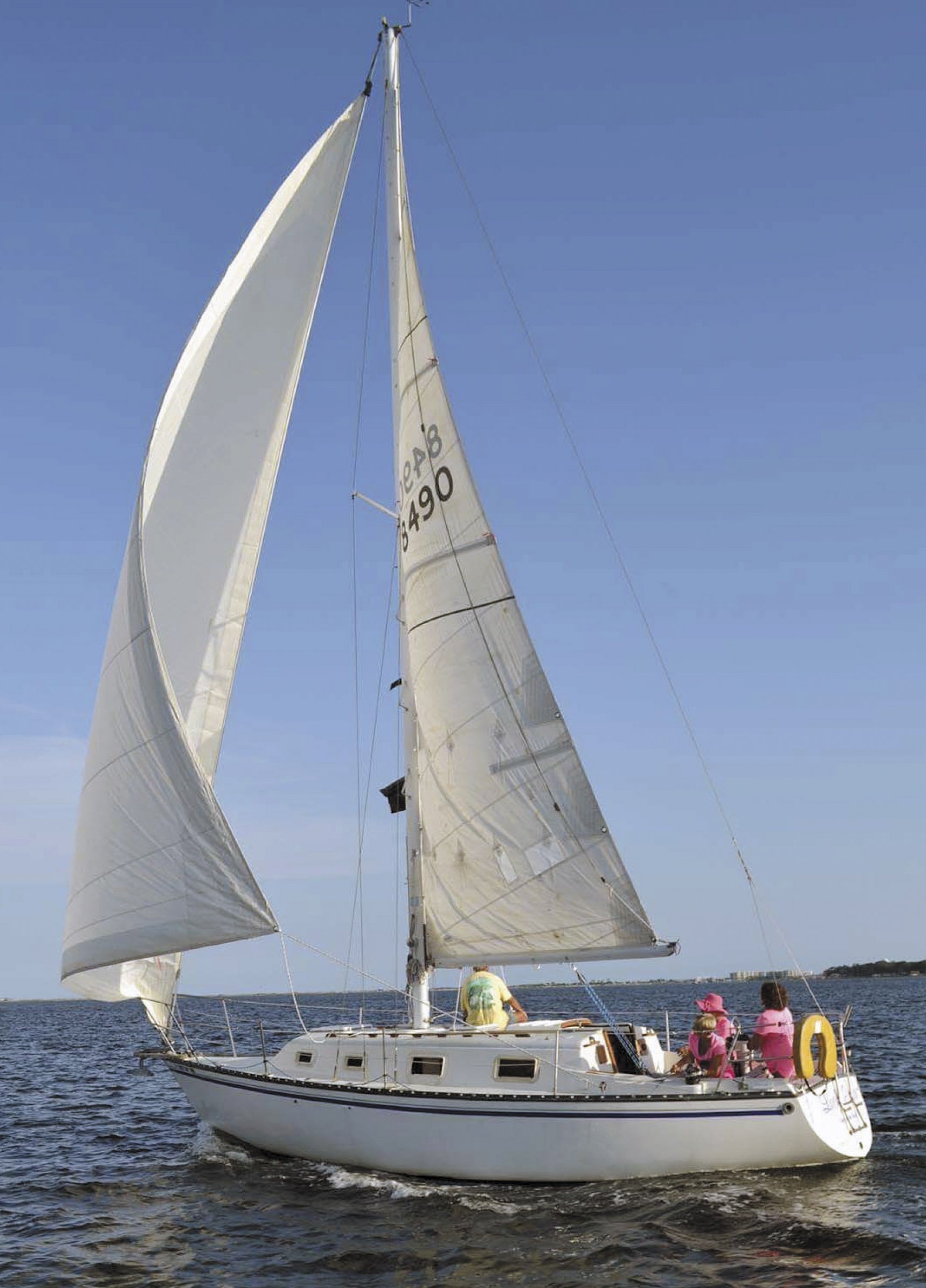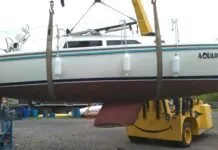CeCe Stoldt

If you grew up sailing in Florida in the 1970s and 80s as I did, you probably spent many hours day dreaming and looking at Hunters, or, if you were fortunate, sailing one. Those memories might not exist at all were it not for bit of luck and perseverance. While the U.S. economy was caught in a global recession, the Hunter plant in Florida was still churning out sailboat hulls by the dozens.
You didnt have to spend a lot of time on these boats to realize that they werent the paragon of craftsmanship. The laminated floor and furniture seemed dated even back then, and the rough glasswork betrayed the boats mission: to persuade the average Joe that even he could still afford a great escape. By the mid-1980s, it seemed as if every third sailboat entering the Biscayne Bays waterborne bacchanalia, the Columbus Day Regatta, was a Hunter. (Escape, as any good boatbuilder knows, can take many forms.)
While Hunters marketing genius is enviable, the true achievement in its early boats like the John Cherubini-designed Hunter 30, which we review in the June issue of Practical Sailor is that theyve managed to endure at all. The Hunter 30 was launched on the wake of the 1973 oil embargo, and the design survived through nine years of stagflation and rising unemployment.
Fortunately, for Hunter and other builders who prevailed in this era, significant improvements in fiberglass construction methods coincided with the need for lower production costs. Laminate schedules were getting thinner, and the higher fiber-to-resin ratio was more economical. Selling sailboats could still be lucrative, but profitability in the mid-price ranges often required a few corners to be cut.
Almost any sailing forum on the Internet has its resident boat snob who compares fixing up and old production boat from the 70s to putting lipstick on a pig. Certainly, the Hunter 30 has some inherent flaws, but none are irredeemable. Just as a vase cracked during firing can hold more charm than the perfect one, an old Hunter 30 can grow on you. The photos submitted by proud owners that accompany the June 2016 boat review are the clearest proof of this.
We stumbled on this inspiring treasure trove by chance. The handwritten surveys in our dusty decades-old file on the Hunter 30 were growing stale, so for this update on the Hunter 30 we turned to current owners for their impressions. A surprising number of owners responded with detailed answers to our questions, and though each had a few quibbles, the overall assessment of the Hunter 30 was overwhelmingly positive.
Of course, I found the tales of customized improvements to be intriguing, but what really moved me were the personal stories behind what might be considered a run-of-the-mill entry-level cruiser. One Hunter 30 had been passed down through two generations, another had sailed to the Caribbean and back, and another had served as an affordable home while its owner pursued a graduate degree.
Browsing the photos of the Hunter 30s featured in the June issue, I was reminded that a boats pedigree is a terrible gauge of a boats true worth. No, a Cherubini-designed Hunter-despite the exotic-sounding name-is not a Morris, a Hinckley, or a Swan. But in the hands of an owner who appreciates his good fortune, a modest Hunter 30 is worth more than the finest megayacht.
See the June 2016 issue for the complete review of the Hunter 30. For an indepth look at more than a dozen classic, entry-level cruising boats that won’t break the bank, you can purchase our two-volume e-book “Entry Level Racer Cruisers” at our online bookstore.








































